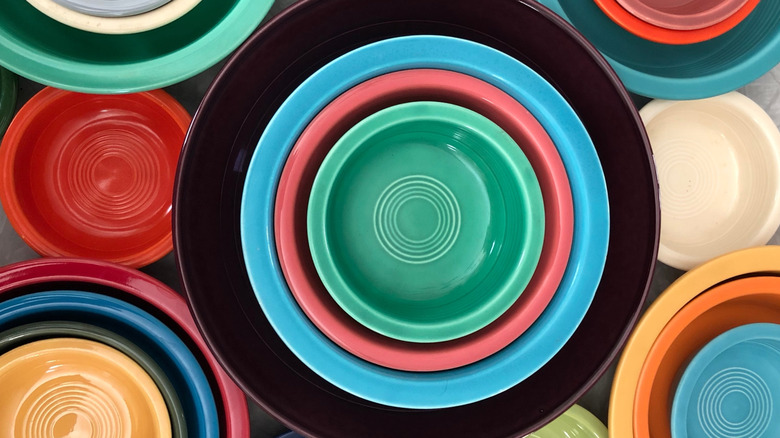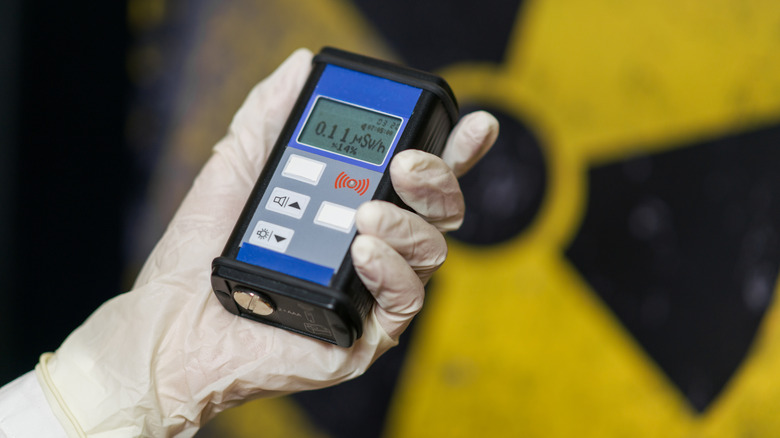Are Radioactive Fiesta Ware Dishes Safe To Eat From?
I am the product of an extremely nuclear family — my dad worked for the Nuclear Regulatory Commission, so we spent many a family vacation touring power plants. As if that wasn't enough to give me Spiderman-like superpowers, I also own a fair amount of "radioactive" red Fiestaware. Anecdotally, I can confirm that I'm still alive after many years of using these dishes, but science also assures us that they're relatively safe. On the scale of things that can harm you in your daily life, using uranium-glazed Fiesta red dishes hardly even registers.
The Oak Ridge Associated Universities Museum of Radiation and Radioactivity conducted a pretty exhaustive analysis of how much radiation an individual would be exposed to if they ate from red Fiestaware plates every day. Even if some of the uranium managed to leach into their food, the maximum dosage of radiation they would receive is about 40 millirems (mrem) per year. According to the U.S. Department of Energy, Americans average about 620 mrem of radiation exposure per year, half of that from naturally occurring sources such as minerals in the ground and the atmosphere. Even the accepted occupational dose of 5,000 mrem per year, which is 125 times what you could possibly get from using Fiestaware, isn't associated with an increased incidence of cancer or other adverse health effects.
Most red Fiestaware isn't even radioactive
Even if radioactive red Fiestaware has a bad reputation in certain quarters, collectors like me can't get enough of the stuff. Scientists, in particular, find it handy for checking to see if their Geiger counters are working correctly. The thing is, though, unless your Fiestaware was produced between 1936 and 1943, it probably isn't all that radioactive anyway. Only the original Fiestaware red was made using uranium in its natural state. In fact, at the time, uranium was used in the manufacture of other brands of dinnerware including Caliente, Franciscanware, Harlequin, and Vistosa. Uranium wasn't limited to producing orangeish-red shades, either, but was also used in brown, green, and yellow glazes.
Once World War II was underway, science found another use for uranium, as anyone who's seen the movie "Oppenheimer" will be well aware. Without the necessary uranium to make it, Fiesta red disappeared from the market until 1959. When it came back, however, it was made with depleted uranium, a substance typically about 40% less radioactive than the natural kind. This substance remained in use through 1973, at which point uranium-enhanced Fiesta red was dropped from the company's lineup.

